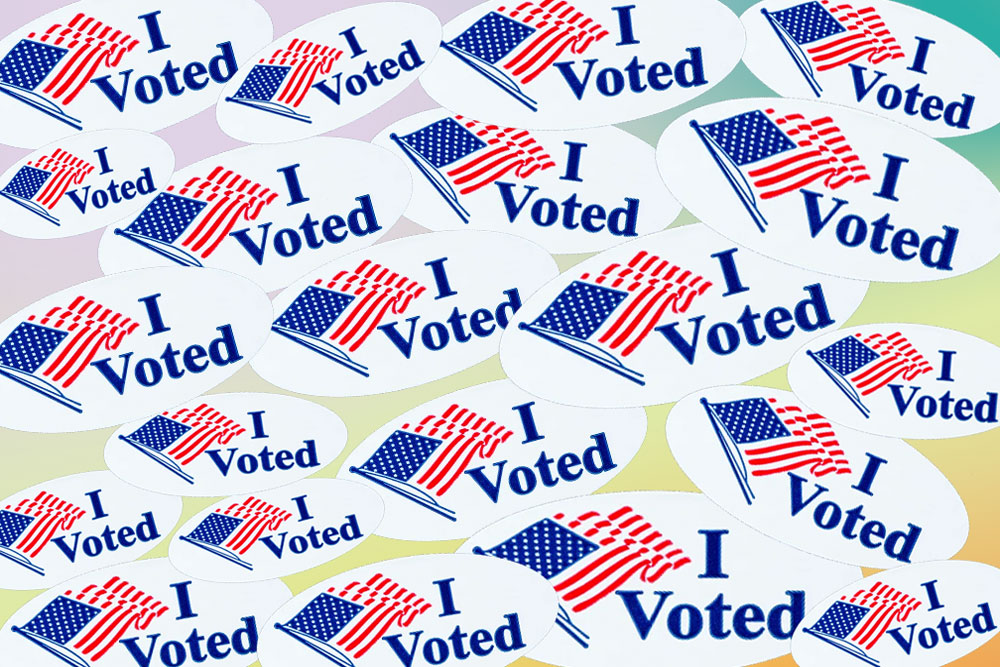Your Guide to Voting
The election is November 3rd. That means you have 15 days (or less!) to get it together and figure out your game plan. Unfortunately, voting in the United States is often strategically made difficult. In a democracy, the right to vote is fundamental, and the ability to do so should be simple. So, we’ve created this guide to make things a little less difficult and a little more democratic, so you can effectively use your voice on election day. We are sure some of you already have voted, and for that, congratulations on getting sh*t done early. Otherwise, now’s the time to read up and make a plan, so you can go vote in this critical election year.
1. The Basics
Let’s start off with the basic requirements. You must be 18 years old by November 3rd and a United States citizen with residency in a U.S. state in order to vote in the general election.
Additionally, two thirds of states require a valid identification in order to vote. Find out what your state’s regulations are now, so you’re prepared come election day.
If you’re voting in person, polling locations open and close at different times depending on your state. You must be in line to vote before your polling location closes in order to cast your ballot. Check your state’s hours of operation, so you don’t miss out.
Easily find your polling location address by state here.
2. Checking Your Registration
You must be registered to vote in order to cast your ballot. Even if you show up to the polls with all the proof in the world that you are a citizen, if you aren’t registered, that doesn’t cut it. I could get into all the reasons why that’s unnecessary and blatant voter suppression, but I’ll spare you (at least for now).
Double check to see if you’re registered with this website. Type in your current name and address, and if you see a green check, you’re good to go. If not, the website guides you through what your next steps should be depending on which state you live in.
3. Registering Online
Voter registration deadlines have passed in many states—but not all (again, more voter suppression, but I digress…). The easiest way to register to vote for most is online, and many states offer this option. Check to see if your state provides this option with Business Insider’s helpful chart.
Now this is important: If you live in Alabama, California, Colorado, Connecticut, Iowa, Michigan, Nevada, Pennsylvania, Utah, Vermont, or Washington, you can still register to vote online as of today (Oct. 19).
Out of these states, if you live in Alabama, California, Michigan, or Pennsylvania, TODAY (Oct. 19) is the LAST day you can register to vote online.
If you live in any of the states mentioned above, this tool will guide you through your voter registration process.
4. Registering In Person
If your state does not offer online registration, your state’s online registration date has passed, or if you simply do not trust the internet, you can still register in person in many states. Twenty-one states allow you to register in person all the way up to election day, but we recommend getting this done as early as possible to avoid long lines or possible mishaps. Check to see if your state is still offering in-person registration here.
You can register in person with your state or local election office. You may also be able to register at one of these nearby public facilities:
- The department of motor vehicles
- Armed forces recruitment centers
- State and county public assistance offices such as SNAP/food stamps and WIC
Be sure to check with the location first to be sure.
5. Voting Early
Here at Outspoken, we highly recommend that you vote early if possible. Not that I’m speaking from experience or anything, but you never know if you’ll lose your driver’s license on a drunken night out the day before election day, only to realize it’s gone as you’re leaving to go vote, then spend the remainder of the day panicking to find it so you can perform your civic duty.
What I mean is, you never know what could happen, and lines can get dangerously long on election day, so it’s best to get it out of the way early if you can. Check to see if and when your state allows early voting. If yours does, your polling location may be different than it would be on election day, so be sure to check in with your local election office first.
6. Absentee Voting
And now for the highly contentious mail-in voting. If your state allows, this is a great option not only for convenience, but also staying safe amidst the pandemic. Because of concerns over COVID-19, some states are automatically sending each resident of the state a mail-in ballot, in which case a ballot will be automatically mailed to all registered voters at their registered address. If you are planning to vote by mail and you do not reside in a state that will automatically send your ballot, be sure to request your absentee ballot ahead of time. We recommend voting by mail as early as possible to allow ample time for any errors that might occur during the process. The USPS recommends mailing yours in at least 15 days prior to the election date. Newsflash: that is today, so act now.
Mail-in ballots can be rejected for a plethora of reasons. To avoid them, read this article by USA Today. It clearly lays out many of the dos and don’ts of absentee voting, so you can be sure your vote is counted and not discarded. Additionally, in some states it is illegal to post a picture of your ballot, so be sure you don’t live in one of them before you take to Instagram.
7. Go Vote!!!
And that’s it. We know it’s a lot, but now it’s all in one place and hopefully not quite as intimidating and confusing. Read it over, double check everything, research who is running for each position, then go vote.
If you still have questions, DM us on Instagram @wetheoutspoken, and we’re happy to help.
Use your voice.
Be Outspoken.
VOTE!

Ann Vrooman, Content Director






